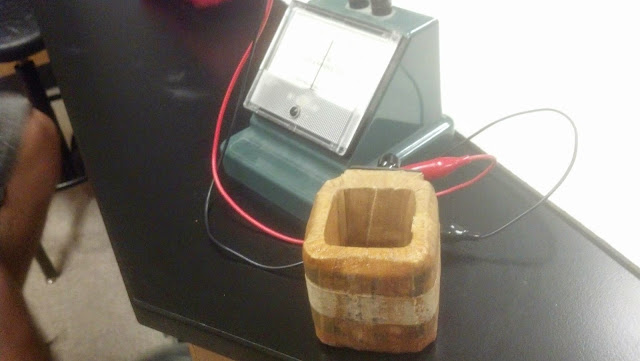On Monday, we measured the magnetic field of a current carrying loop with multiple loops. This is a picture of our setup.
This is a table of the values we measured during the experiment. As one can see, the values of the strength of the magnetic field were not very reliable because of the orientation of the sensor. The values to the very right are values measured by Professor Mason.
Using Professor Mason's values, we determined a constant for the value of B/NI and used that constant to calculate the length of the coil of wire.
We were also given a coil of wire on Monday and connected it to a galvanometer in order to experiment with electromagnetic induction. We used a bar magnet in this experiment and found that factors such as the number of coils and the velocity in which we moved the magnet in and out of the coil contributed to the amount of current we measured.
This is a demonstration performed by Professor Mason in which a current was given to a driver coil and a current was induced inside the smaller coil. We observed that the voltage induced in the smaller coil was smaller and 180 degrees out of phase with the voltage that was supplied to the driver coil.






























